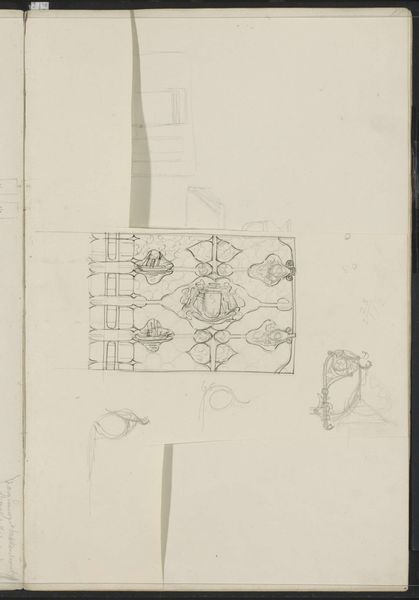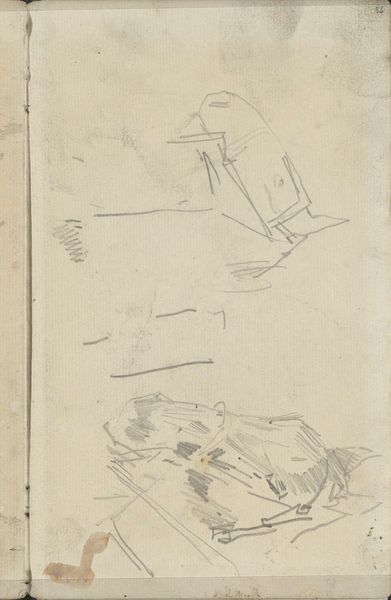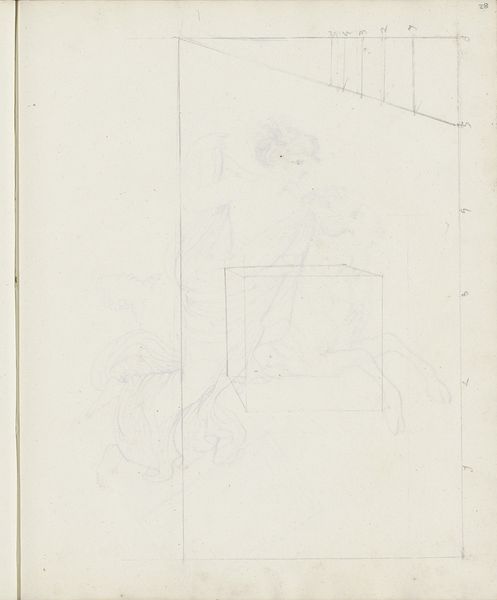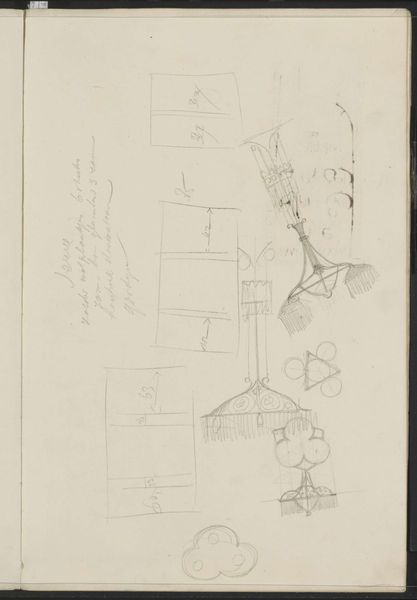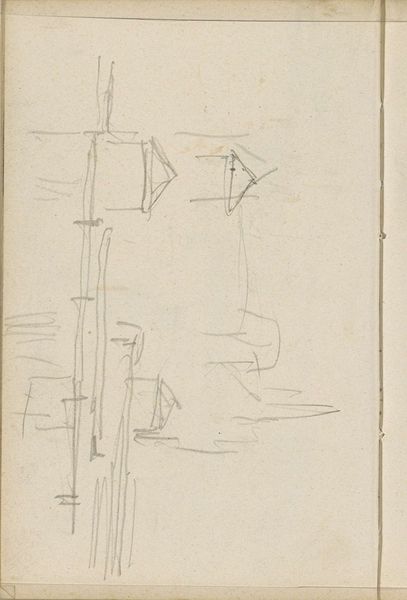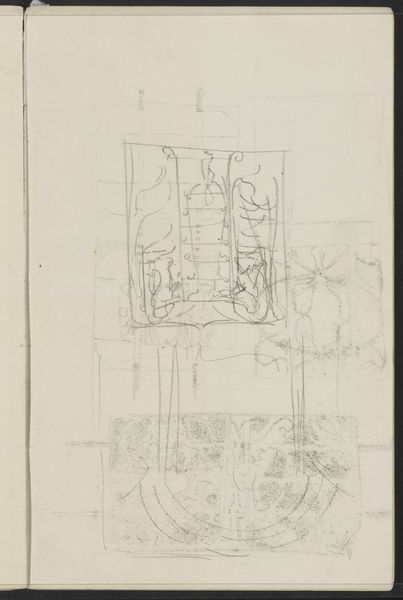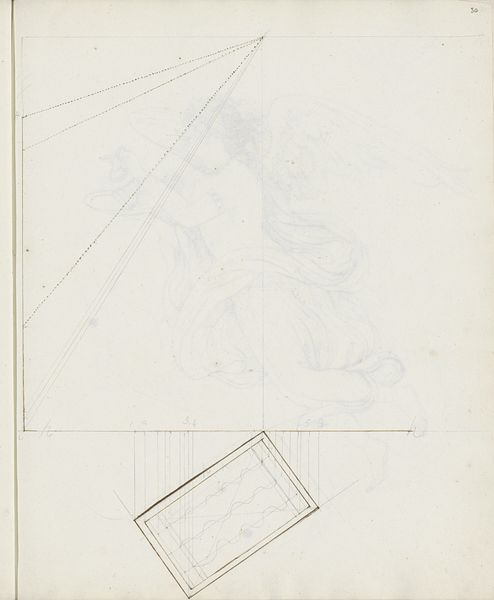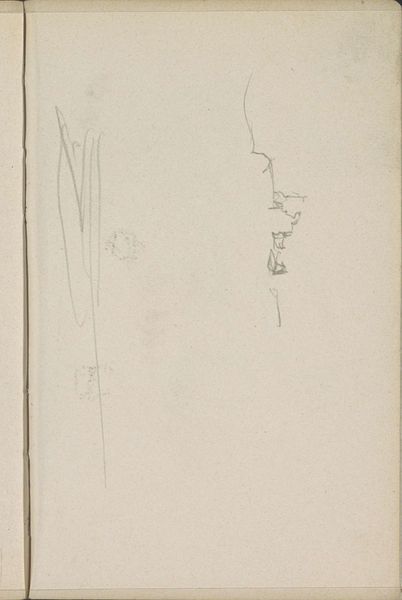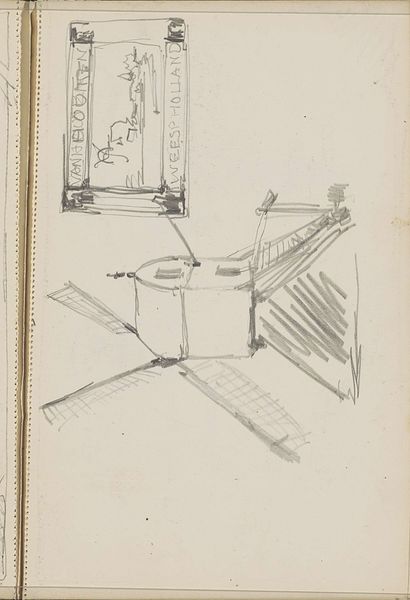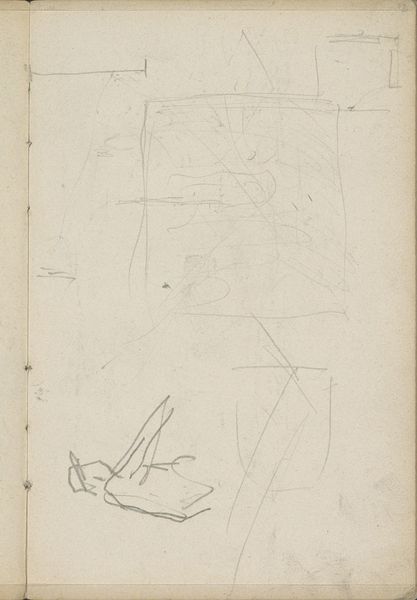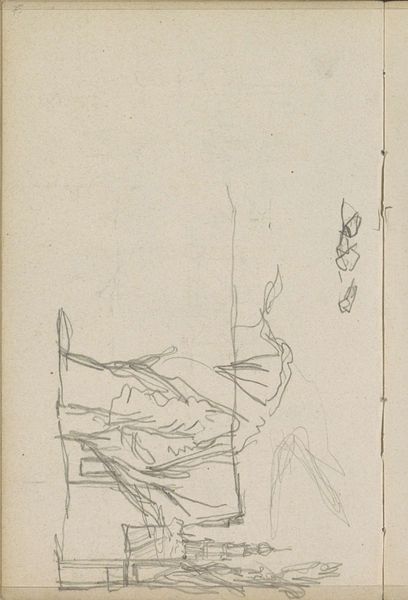
drawing, pencil
#
portrait
#
drawing
#
art-nouveau
#
dutch-golden-age
#
pencil
Copyright: Rijks Museum: Open Domain
Editor: We’re looking at a pencil drawing by Carel Adolph Lion Cachet from around 1903-1904, titled "Table Tops and a Portrait of a Woman." It's housed at the Rijksmuseum. It’s very faint, almost like a collection of ghostly studies, and I'm drawn to its intimacy. What jumps out at you when you see this? Curator: It's interesting how Lion Cachet combines the domestic – those table tops – with the portrait of a woman and floral motifs, right? It prompts us to consider the role of women in domestic spaces during this period. Were these portraits often commissioned, or were they acts of personal expression? Editor: That’s a good question. I wonder, considering it's a sketch, if it was just an exploration for the artist? Curator: Precisely. And consider the influence of Art Nouveau. That floral motif is unmistakable. How do we interpret the role of art movements in reflecting societal values and norms? Were these artists intentionally aligning with broader artistic movements to challenge established aesthetic conventions? Editor: So, it’s not just a pretty drawing, but potentially a statement about artistic and social identity. Is it then about pushing boundaries within a pretty narrow space, given these are just sketches? Curator: Absolutely. The sketch itself provides insights. A finished painting goes through the market, it is consumed differently. The rawness can tell us a great deal about Lion Cachet’s intention, how institutions at the time – exhibitions, patronage – were responding to art that embraced both tradition and the emerging modern aesthetic. Editor: This has definitely given me a deeper appreciation for the political undertones within even a simple sketch. Curator: And that’s how understanding the socio-political context really enriches our engagement with art, isn’t it?
Comments
No comments
Be the first to comment and join the conversation on the ultimate creative platform.
